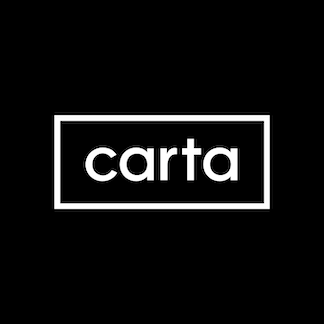What is an option pool?
An option pool or equity pool is a block of shares set aside by a company so that equity can be issued to people in the future. Although they are often called “employee stock option pools,” the set-aside shares can be used to issue equity to anyone who provides services for the company, such as advisors, consultants, and independent contractors, as well as employees.
While it’s called an “option” pool, the actual equity granted from the pool could be stock options or other types of equity grants like RSAs and RSUs.
Why do I need an option pool?
Equity compensation has become industry-standard in the startup world. Issuing equity ownership can help you attract and retain talent without bloating your cash burn rate.
If employee retention isn’t enough of a reason, venture capital investors often expect their portfolio companies to grant employees equity, so it’s likely you'll create an option pool in connection with raising venture funding.
How option pools work
Your option pool is part of your cap table, the record that details and tracks all ownership in your private company, including that of founders and investors.
An option pool can also be used as a budget planning tool to help plan your hiring while maintaining a strong investor relations strategy. By forecasting how much equity you need to reserve for new hires between each funding round, you’ll help your investors understand exactly what percentage of your company they own and have more certainty around future dilution.
Option pool vs. ESOP
The abbreviation ESOP is sometimes used to refer to “employee stock option pool,” especially among VC investors and startups. But it also can refer to “ employee stock ownership plan,” which is a type of retirement account a company funds with stock for employees and which has certain tax benefits. The latter is used across industries, including construction and manufacturing, and may be used by public or private companies, but typically not by venture-backed startups.
A common mistake to avoid
Sometimes founders mistakenly think that an employee’s offer letter that details equity compensation is equivalent to granting options. While it’s a good idea to have equity as part of an employment offer, stock options must be formally granted by the board to lock in the option’s strike price and current fair market value (FMV).
To grant options, you’ll also need an up-to-date 409A valuation, which is an independent appraisal of the FMV of your company’s common stock.
How big should my option pool be?
Your company’s stock option plan includes information about how many shares will be reserved in the option pool. Under Rule 701 under the Securities Act of 1933, a private company needs a formal stock option plan (which typically lasts for 10 years) to issue any securities to service providers under this exemption. While you’ll want to work with your law firm to create your stock option plan, these sample documents we created for founders can help you get started.
Once you have a plan in place, you can simply make amendments to increase the number of shares in the option pool on an as-needed basis. The initial plan and any expansions must be approved by your board of directors and then by shareholders.
How to size your employee option pool
An option pool should be large enough to grant equity to new hires and to give refresh grants to existing employees through to your next funding round.
According to Carta data, the average time between rounds for early-stage companies is between 18 months and 2.5 years—and this timeline can shift along with changing market conditions. Most companies will expand their equity pool as needed for headcount goals at each funding round.
The two main ways to size your option pool are top-down and bottoms-up. We recommend employing both strategies: Start with the bottoms-up approach and determine your company’s needs, then see how it compares to industry benchmarks from a top-down view, to make sure you’re not way off-track.
→ Tool: Size your option pool with Carta's free option pool calculator
Bottoms-up
With this method, you’ll build your equity pool according to your company’s compensation plan.
First, create a hiring plan based on your company’s expansion needs and projected team growth until your next expected funding round. Then, assign planned equity grants to each role based on industry benchmarks related to company stage, function, and seniority. Finally, add up the total equity you’ll need for this list of planned new hires, plus any equity you’ll need for refresh grants, to determine the total size of your equity pool.
You can use Carta Total Compensation’s New Hire Equity Forecast report to easily calculate the approximate number and value of shares you’ll need for your hiring plan.
When building out your hiring plan, keep in mind:
-
You may need to offer early employees more equity since they’re taking a bigger risk joining a relatively unproven company.
-
Option pools are typically increased at each fundraising round. Especially if you anticipate hiring C-suite level executives before your next fundraise, you may need to offer them a larger percentage (compared to rank-and-file team members) to incentivize them to join.
The size of your equity pool will typically increase as your company hires and grows over time, which usually corresponds to when the company’s valuation rises.
Top-down
This approach uses comparable company data to inform your own option pool. The common rule of thumb is that the equity pool should represent about 10% of company shares, but may vary based on which companies you select as your peers. You can look at companies that are in a similar fundraising stage or within the same industry, among many other factors.
While benchmarks from other companies can be helpful in ensuring your option pool size isn’t too off-base, they can be less precise to rely on. There’s a reason why there’s such a large range in the typical percentage founders set aside, and every company is different. Carta data from Q2 2023 shows that the middle half of companies saw equity dilution around 20% at the seed stage. Some companies are more cash-intensive than others, and some require more (or less) headcount.
Option pools and stock dilution
When investors give you a pre-money valuation in a term sheet, they usually include a target option pool percentage as a core pricing term. The option pool increase is typically counted in the “pre-money shares” and thus will not dilute investors. As a result, the bigger the option pool increase is, the lower the price per share will be, and the higher your investors’ ownership will be. Any additional option pool increases after the financing round will equally dilute all stockholders, including the investors;
Be realistic about your future hiring needs
Investors sometimes prefer larger option pools up front during the financing, because that usually means your option pool will last longer, reducing their future dilution. This is where your hiring plan comes in. By thoughtfully mapping out your key hires over the next year or two and how much equity they need, you can show investors how you came to your number and may be able to negotiate a smaller, more realistic pool.
Carta Total Compensation’s New Hire Equity Forecast report makes it easy to forecast the equity you’ll need for hiring and share with your investors.
Of course, this doesn’t mean you should create an option pool that’s too small—you do want to set aside enough shares to attract the hires you need. The key is finding the right size so your ownership percentage and share price feel fair to everyone.
How option pool size impacts dilution
Creating a new option pool or resizing an existing pool dilutes existing shareholders’ ownership, including a founder’s. However, the first option pool usually only dilutes a founder’s shares because there are typically no other shareholders at that time.
For example, if a founder owns 10,000 shares (100% of the company) and creates an option pool of 1,500 shares, there are now 11,500 shares of company stock. The founder now owns 87% of the company (10,000/11,500), not 100%.
How to proactively manage your option pool
When trying to figure out how many shares you’ll need to allocate for future hiring needs and the impact on your option pool, you’ll need:
-
The current number of shares in your option pool
-
How many shares you’ll need to grant new hires (accounting for their role, level, and location)
Carta Total Compensation’s New Hire Equity Forecast report makes it easy to calculate how many shares you’ll need to grant new hires. By pulling in data from your cap table and equity benchmarking data into a single spreadsheet, you can model out the number and value of shares you plan to issue each new hire based on role, level, and location. You can then input this data into your forecasting models to determine your equity pool burn rate.




